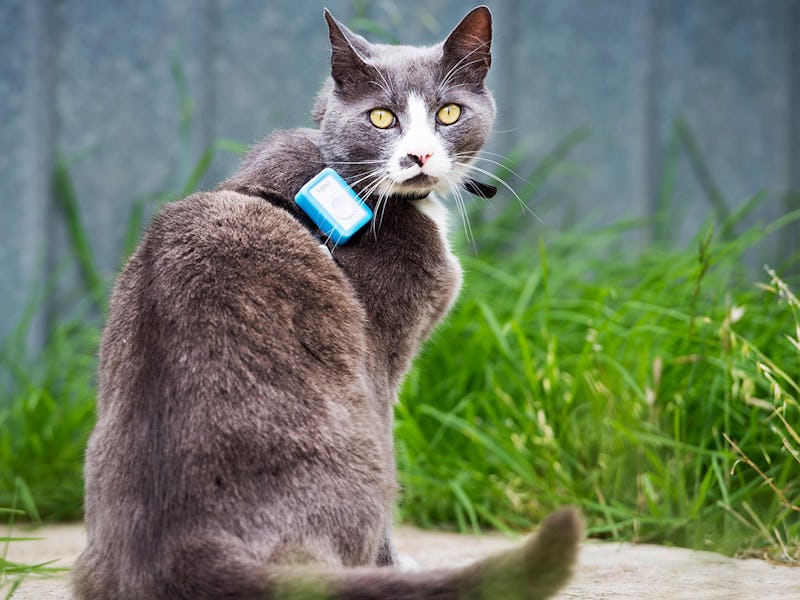Should you let your cat go outside? GPS study reveals the deadly consequences
Fitting cats with geolocating backpacks shows there is a dark outcome to letting them out.

Your pet cat might enjoy a romp in the yard, but local wildlife won’t be so thrilled. Cats kill up to ten times more wildlife than a comparable predator in the wild, according to a new study.
Previous research has suggested that your pet kitty is something of an ecological nightmare. As a 2013 study in Nature Communications estimates, our feline friends kill between 1 and 4 billion birds each year, along with up to 22 billion other mammals.
To understand just where and how the animals manage to wreak such carnage, researchers distributed GPS tracking backpacks to pet owners in six countries, including the United States, United Kingdom, Australia, and New Zealand. They collected data on both how far 925 pet cats roamed and how many animals they hunted down.
Pet cats kill between two and ten times more wildlife than native predators, the researchers found. The study appeared Wednesday in the journal Animal Conservation.
That incredible kill rate has to do with where they hunt for prey.
Researchers used GPS trackers to track these feline predators.
Hyper-local hunting
While house cats eat fewer wild animals than wild predators thanks to the cat food supplementing their diet, they tend to stick to their home, yard, and maybe wander into the neighborhood.
That means their hunt is more concentrated.
“Our research shows that pet cats can have a large impact on prey populations, but that this is mostly localized near their houses,” said Roland Kays, lead author and a professor at North Carolina State University, in a video accompanying the study.
Different cats had different tendencies when it came to hunting, Kays said, but all of them were deadly. Hunting pros killed more than 11 prey animals every month, while less ambitious cats made about four successful kills every month.
Compared to a wild jungle cat — which kills around 400 mice in a month — those numbers might seem trivial. But jungle cats hunt for prey across a huge range of about 605 hectares, while pet cats tend to stay within 3.6 hectares (100 meters) of their homes. In other words, our pet kitties do some serious hyper-local damage compared to their wild counterparts.
Paired with the fact that house cats tend to live in close quarters with one another, our pets’ collective killing power can be four to 10 times greater than that of wild animals.
All of this evidence adds up to one, straightforward solution to protect wildlife populations, Kays says: Keep your cat inside.
“The easiest thing we can do to counteract this, and help protect wildlife, is to keep our cats indoors."
Abstract: Domestic cats are a conservation concern because they kill billions of native prey each year, but without spatial context the ecological importance of pets as predators remains uncertain. We worked with citizen scientists to track 925 pet cats from six countries, finding remarkably small home ranges (3.6 - 5.6 ha). Only three cats ranged >1 km2 and we found no relationship between home range size and the presence of larger native predators (i.e. coyotes, Canis latrans). Most (75%) cats used primarily (90%) disturbed habitats. Owners reported that their pets killed an average of 3.5 prey items/month, leading to an estimated ecological impact per cat of 14.2-38.9 prey ha-1 yr-1. This is similar or higher than the per-animal ecological impact of wild carnivores but the effect is amplified by the high density of cats in neighborhoods. As a result, pet cats around the world have an ecological impact greater than native predators but concentrated within ~100m of their homes.